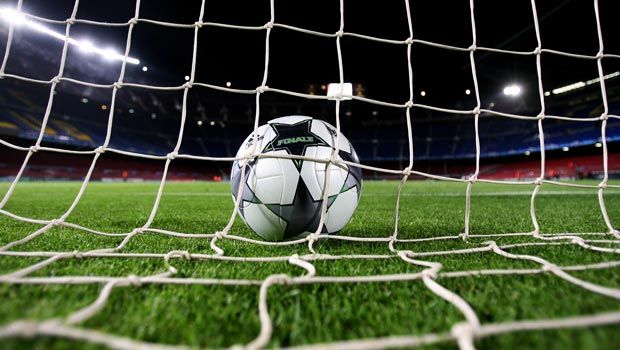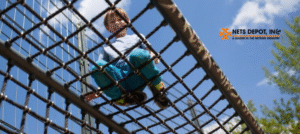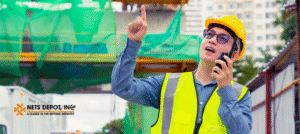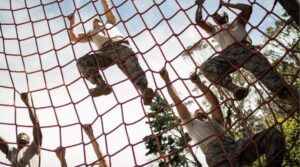Sports netting installation is a critical component for ensuring safety, enhancing gameplay, and maintaining efficiency in sports facilities. Whether you’re managing a professional stadium, a community field, or a school gymnasium, the right netting can make all the difference. It protects spectators, keeps players focused, and ensures the proper functioning of the facility.
However, installing sports netting isn’t a simple task. It requires careful planning, precise measurements, and expert execution. Nets Depot Inc., a leader in custom sports netting installation, shares these five essential tips to help you succeed in your next project.
Tip 1: Choose the Right Type of Sports Netting
Selecting the right type of netting is the foundation of a successful sports netting installation. Different sports and applications demand specific netting characteristics to meet safety and functionality standards.
Factors to Consider When Choosing Sports Netting:
- Material:
- Nylon is highly durable and versatile, making it suitable for both indoor and outdoor use.
- Polyethylene is lightweight and UV-resistant, ideal for long-term outdoor installations.
- Polyester offers exceptional strength and is often used in high-impact sports like baseball or hockey.
- Mesh Size:
- Weather Resistance:
- Outdoor netting must withstand harsh conditions like rain, wind, and prolonged sunlight. Look for UV-protected materials.
- Customization Options:
- Each facility has unique requirements. Custom-sizing your netting ensures a perfect fit, enhancing safety and aesthetics.
By prioritizing quality and suitability, you can create a safer and more enjoyable environment for players and spectators.
Read it also:- Everything You Wanted to Know About Sports Netting Installation
Tip 2: Understand Installation Requirements
Preparation is key to a seamless sports netting installation. Without a clear understanding of your facility’s needs, the process can become inefficient and prone to errors.
Steps to Prepare for Installation:
- Conduct a Site Survey: Walk through the area to identify challenges like uneven ground, existing structures, or weather exposure.
- Choose Proper Anchor Points: Ensure the facility has secure poles, walls, or other structures to attach the netting.
- Account for Environmental Factors:
- Outdoor installations should consider wind speed and direction.
- Indoor setups might need to work around ceiling beams or limited space.
- Determine Proper Installation Height:
- Safety regulations often dictate minimum heights for specific sports. Consult with local codes or guidelines.
Taking these steps ensures the installation process is smooth, efficient, and compliant with safety standards.
Tip 3: Invest in Quality Hardware and Accessories
Even the best netting won’t perform effectively without proper hardware to support it. The hardware and accessories you choose will directly impact the durability and safety of your sports netting installation.
Essential Hardware for Sports Netting:
- Steel Cables: Provide tension and prevent sagging.
- Galvanized Poles: Resist rust and corrosion, especially important for outdoor settings.
- Heavy-Duty Clips and Fasteners: Secure the netting tightly to the support structures.
- Pulley Systems: Allow for easy adjustments, making maintenance simpler.
- Padding for Poles: Protect players and reduce impact risks in contact zones.
Investing in high-quality hardware ensures that your installation lasts for years with minimal maintenance. It also prevents safety risks from faulty or weak components.
Tip 4: Focus on Safety and Compliance
Safety is one of the most critical aspects of any sports netting installation project. Proper planning and adherence to safety standards protect players, spectators, and staff.
Safety Best Practices:
- Ensure Proper Clearances: Make sure the netting doesn’t obstruct walkways, exits, or nearby structures.
- Use Flame-Retardant Materials: In indoor arenas or areas with lighting fixtures, flame-retardant netting may be required.
- Regular Inspections: After installation, schedule periodic checks to identify wear and tear.
- Training Staff: Train facility staff on how to handle, adjust, or replace netting safely.
Compliance with local and national regulations also reduces liability and ensures peace of mind for facility owners and operators.
Tip 5: Partner with Experts
Sports netting projects can quickly become overwhelming without professional help. Partnering with an experienced provider like Nets Depot Inc. ensures your sports netting installation is efficient, reliable, and tailored to your needs.
Why Work with Professionals?
- Accurate Measurements: Professionals ensure every inch of your facility is accounted for, minimizing gaps or overlaps.
- Custom Solutions: From material selection to installation techniques, experts offer solutions tailored to your specific needs.
- Time Efficiency: With the right tools and expertise, they can complete the project faster than a DIY approach.
- Post-Installation Support: Many companies provide ongoing maintenance and repair services, ensuring the netting stays in top condition.
With the expertise of Nets Depot Inc., your installation will meet safety standards, look professional, and last for years.
Comparing Common Netting Materials
| Material | Durability | Best Use Cases | UV Resistance |
|---|---|---|---|
| Nylon | High | Indoor & Outdoor Sports | Moderate |
| Polyethylene | Moderate | Outdoor Sports (Golf, Baseball) | High |
| Polyester | Very High | High-Impact Sports | Moderate |
Choosing the right material based on your specific needs ensures optimal performance and longevity.
Google My Business: Explore Nets Depot Inc.
When it comes to professional sports netting installation, Nets Depot Inc. is a trusted name. We offer tailored solutions for sports facilities, ensuring every project meets high standards of quality and safety.
Visit our Google My Business profile to learn more about our products, explore reviews from satisfied clients, and view examples of completed projects. With a reputation for excellence, we’re proud to serve clients across the country. Let Nets Depot Inc. handle your next installation with precision and care.
Frequently Asked Questions (FAQs)
- What is the best netting material?
Polyethylene is the most popular for its durability and weather resistance. Nylon and PVC-coated polyester are also great for high-impact areas. - How high should the sports netting be?
It depends on the sport, but typically 20-30 feet for baseball and 10-15 feet for tennis. - Can I install the netting myself?
DIY installation is possible, but professional installation ensures better results and durability. - How do I maintain the netting?
Clean regularly with mild detergent, inspect for wear, and check fasteners for security. - Do you offer custom-sized netting?
Yes, we provide custom-sized netting to fit your specific needs.
Contact Us
Ready to begin your sports netting installation? Contact Nets Depot Inc. today for a free consultation or to learn more about our services.
- Phone: (305) 215-5579
- Email: info@netdepot.com
Our team of experts is here to help secure your facility with high-quality, durable sports netting. Reach out today!






